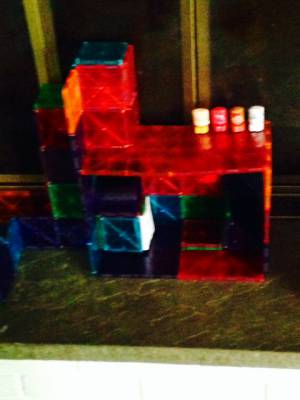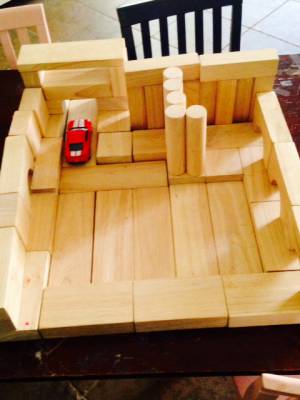Circle Speech - Small Talk
Building Language with Building Toys
- Font size: Larger Smaller
- Hits: 2620
- 0 Comments
- Subscribe to this entry
- Bookmark

Building blocks are as basic as toys get. So basic, that sometimes their value in play can be overlooked. Blocks and the large variety of building toys should be on your radar because they are great learning tools.
Building helps children with fine motor skills. Coordination, sequenced movement and strength are important for dressing, buttoning, tying shoes, opening lunch containers and writing. Choosing and manipulating blocks helps build these fine motor skills.
Cognitive skills such as spatial awareness, attention, planning and mental flexibility are necessary to walk, talk, learn to draw, practice math, make friends have fun and basically get through the day in one piece. Building toys are an engaging way to practice all of these thinking skills.
Play skills as children are the dress rehearsal for social skills as adults. A big building site can offer a microcosm of a family, a relationship or a workplace. It sounds dramatic, but negotiation, leadership, cooperation and empathy can be test-driven during a big play project like building. All these skills you do need in a grown-up life.
Building toys offer children the opportunity to communicate in a variety of ways. Children working together to create something new need to listen and remember. They must ask for what they need and sometimes, ask for help. Symbolic, or pretend, play helps children learn that one thing can stand for another. That the creative process is important. What they build can be more than a wooden box with four sides. It can represent a street, a town, the moon--or a whole imaginary world. Symbolic play helps develop creative thinkers and learners.

Block play can help focus children and engage their senses. Sensory-based play is, at times, most important for children with learning differences. Exploring different weights, shapes and textures can help keep children involved with their peers in play. Building materials with weight (large wooden blocks) or blocks with magnets (like Magna Tiles) help the brain-body connection in children. The more comfortable a child feels in his body, the longer that child will focus and learn.
